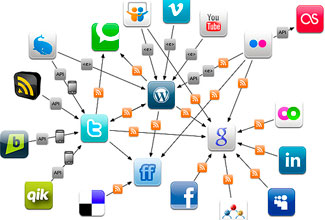Ed reads a lot of magazines, and he’s sure you do too. But there’s a whole cluster of magazines that you probably aren’t reading and may not even know exist: Business-to-business magazines. B2Bs, also known as trade magazines, are publications with content targeted towards a specific industry or business instead of a consumer.
“A reader can visit a myriad of sites to find new recipes to try or discover what Brangelina is up to, but there’s a limited sphere for information on how to passivate stainless steel,” explains Kate Hand, senior managing editor at a B2B publisher with 11 magazines.
Ed’s shining some light and love on this often forgotten, valuable magazine territory by giving you everything you need to know about B2Bs.
1. Readers are advertisers and readers.
“It can be a big challenge to report on the same people who are your readers and advertisers,” says Lauren Masterson, editor at Argus Media. “You have to juggle a lot of different concerns.” B2B magazines have to balance positive and negative news while keeping in mind the competing companies who are both readers and advertisers. “My impression is that we’re a lot more beholden to our readers and advertisers than many other magazines because rather than being mostly in the publishing industry, we’re solidly in the ocean industry, and we’re all in it together,” she adds.
2. There can be a lot of jargon.
Because B2Bs are industry-specific, there may be jargon that’s difficult to understand. But don’t let that deter you. “The way I dealt with the jargon when I first got here was really just research; you have to use all the sources available to educate yourself about each topic as much as possible,” says Masterson.
3. Staffers wear many hats.
Many B2B magazines have much smaller staffs than national consumer magazines. Some may have staffs of just two members, so staffers are required to take on a variety of responsibilities. “In a single day, I might be consulting for a redesign, helping compile a directory, choosing cover shots, writing a news story, blogging or creating a new production schedule,” says Hand.
4. Titles may have more of an economic cushion.
“We’ve faced the same economic situation,” says Hand. “2009 was certainly a tough year for revenue, but I think B2B magazines have a staying power that many consumer titles lack. The information we provide to our readers in each industry we serve is unparalleled. By investing heavily in expert editorial content, a B2B title can dominate the space it’s in, making itself THE place to come for a specific body of knowledge. After all, it’s not like there are a lot of bloggers or content aggregators repurposing such industry-specific information.”
5. Promotions may happen quickly.
“Jobs aren’t as hotly in demand for industry publications as they are for popular consumer titles,” says Hand. “meaning you may be able to attain a higher position more quickly. For instance, I’m a few years out of grad school at Medill working as senior managing editor on all 11 of the publications at my company.” Masterson agrees: “I actually achieved the Ed2010 goal of being a full editor before 2010, whereas if I had worked at a large magazine I’d probably still be a fact-checker.”




 Tips for Networking to Your Heart’s Desire
Tips for Networking to Your Heart’s Desire